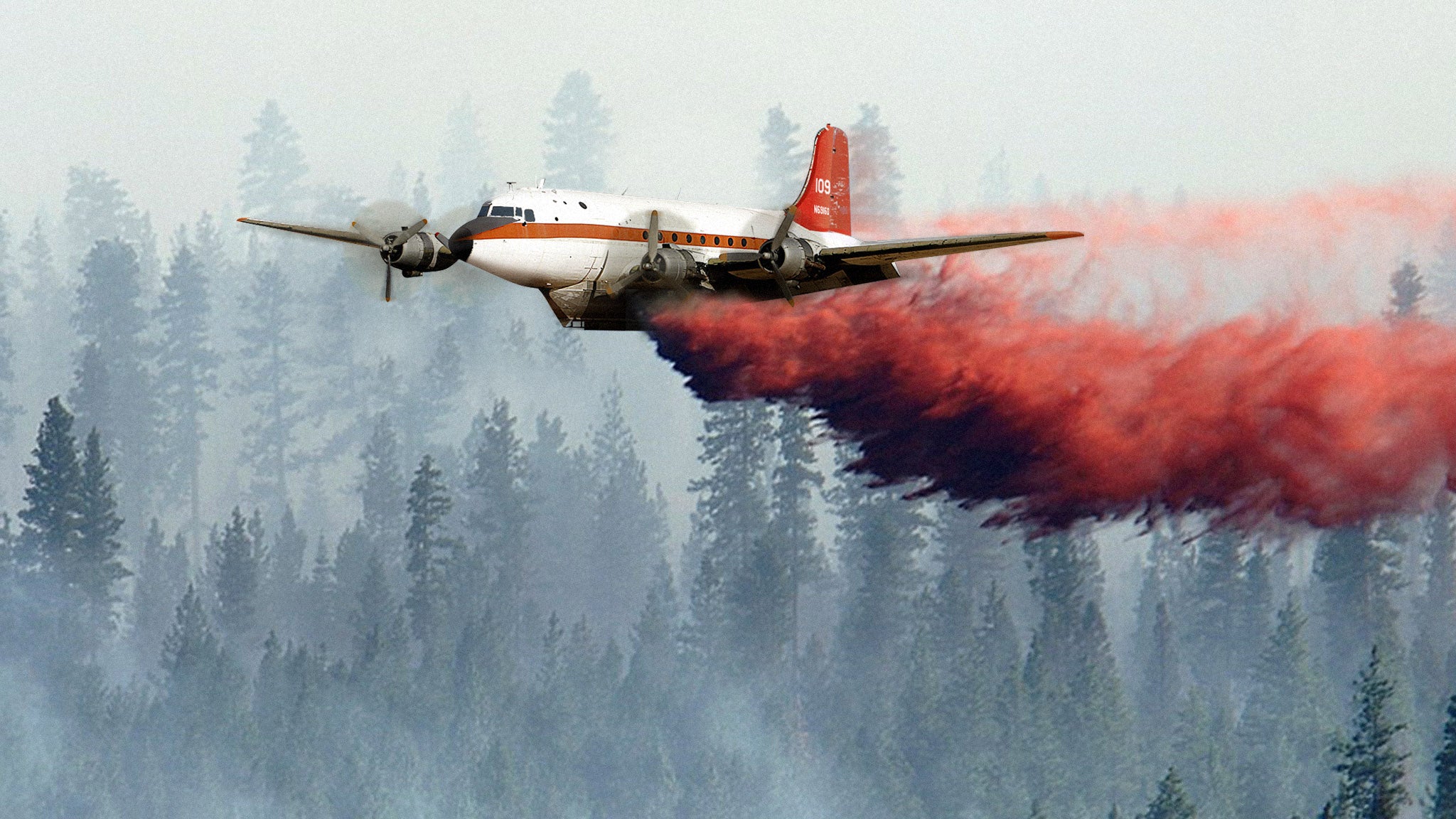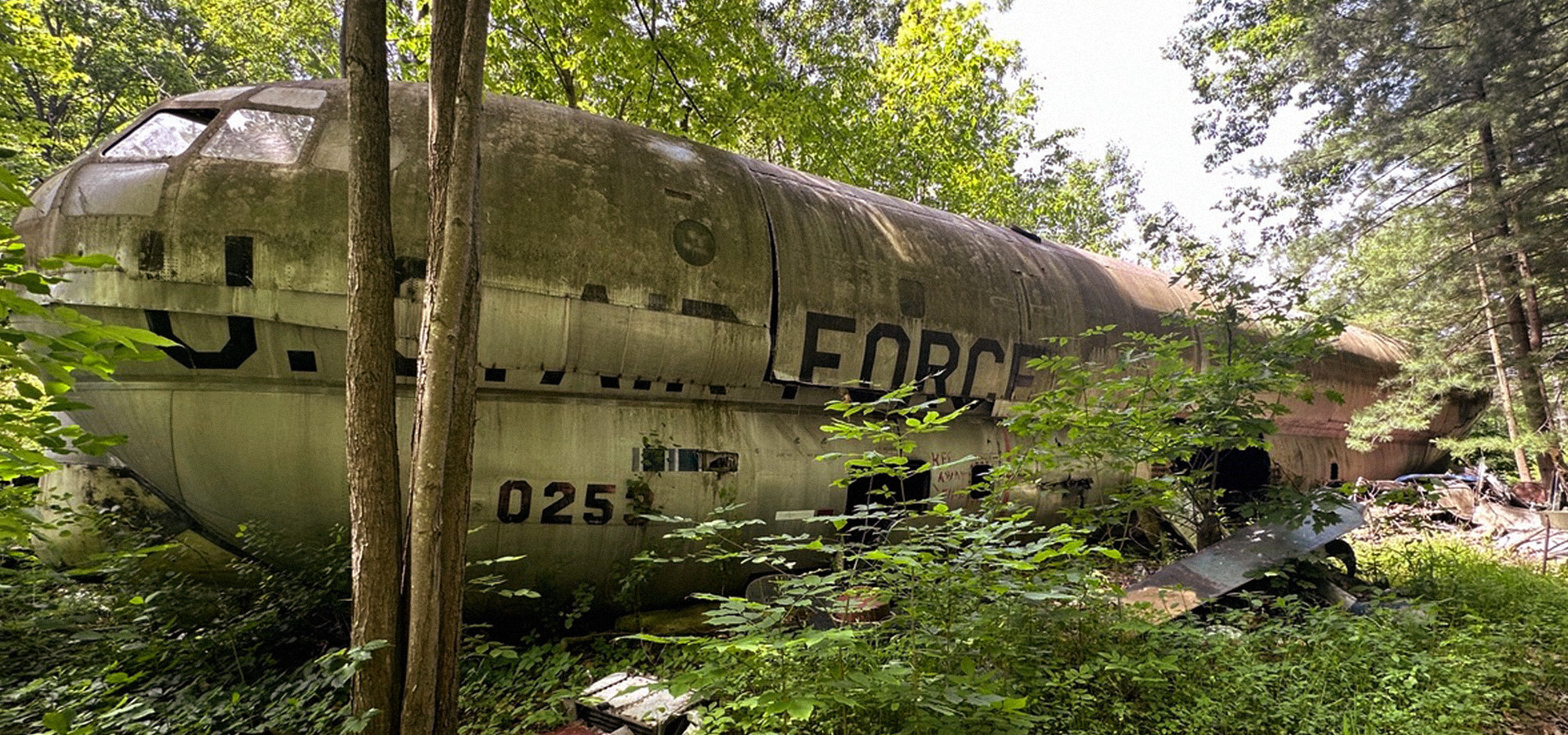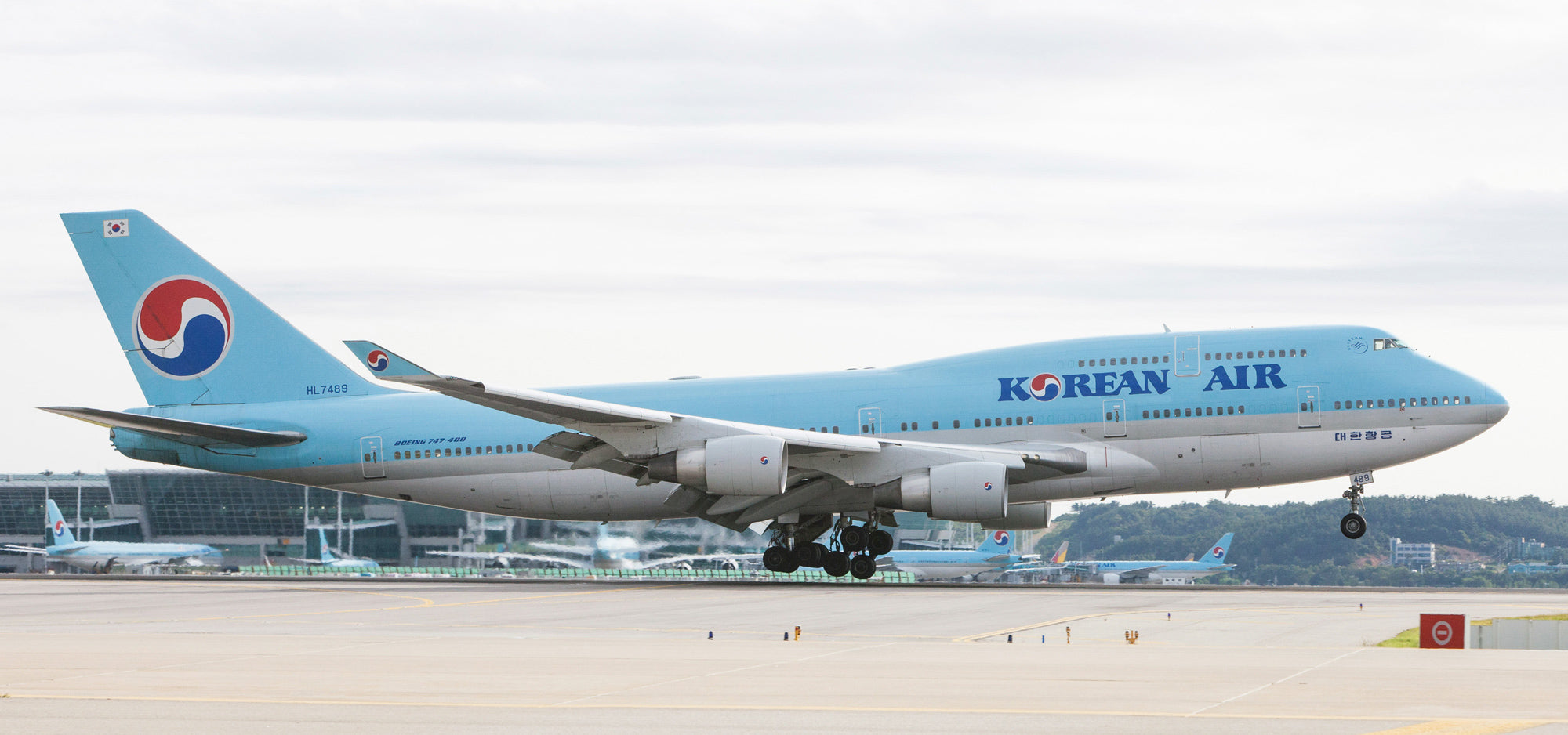The newest aircraft to join the PlaneTags fleet is a Douglas C-54 Skymaster. Tracing its roots from a warbird to an air tanker has not been the easiest but let us show you what we found.
C-54
The Douglas C-54 was a four-engined, piston-powered, propeller transport aircraft used by the U.S. for military transport during World War II and the Korean War.

It was a derivative of the Douglas DC-4, which had originally been developed in 1938 as the DC-4E. The DC-4E was intended to carry passengers - 42 by day or 30 by night, complete with sleeping accommodations. It was also going to be very advanced, with auxiliary power units, a nosewheel, air conditioning, and a pressurized cabin, among other features. The experimental design came from a requirement by United Air Lines to develop a larger replacement for the DC-3. American Airlines, Pan American Airlines, TWA, and Eastern Air Lines also joined United in contributing $100,000 to its development. Although a prototype flew successfully in 1938 and was considered a success, it was deemed too expensive to maintain. Instead, the complex design was abandoned and replaced with a new, simpler aircraft called the DC-4.

Thank you Rob Schneider for the drawing.
As World War II broke out, the U.S. War Department took over the airline orders for the DC-4 and reallocated them to the USAAF, under the designation C-54 Skymaster. Four additional fuel tanks were added, as well as a cargo door and other features that allowed it to serve as cargo and troop transport. The C-54 entered service with the USAAF and became a workhorse for long-range transports during the war. The C-54C was the first presidential aircraft, ordered for Franklin D. Roosevelt and nicknamed ”Sacred Cow”.
Berlin Airlift
After WWII, the major Allied superpowers occupied post-war Germany and divided Berlin into quadrants. The Deutschemark had been introduced to create a more stable economy in western Germany. The Soviet Union introduced their own currency to the Soviet-controlled sector of Berlin, but the Deutschmark quickly became the standard. In one of the first crises of the Cold War, the Soviet Union blocked the Western Allies’ access to their sectors of Berlin, offering to drop the blockade only if the Western Allies dropped the Deutschmark. When it was not, the Soviet Union severed land and water routes between the Western Allies-occupied Berlin and stopped supplying food and electricity.

The Western Allies calculated what supplies were needed to keep the city from starving as well as the fuel needed for heat and power, including 646 tons of flour, 11 tons of coffee, 144 tons of dehydrated cheese and 3,475 tons of fuel. This would require them to move 5,000 tons per day, but each of the countries was largely demobilized after the war and lacked the aircraft to fly air-drops on a long-term basis. The C-54 was particularly suited for this mission. For over a year, thousands of tons of food, supplies, and fuel were dropped, saving millions in the beleaguered city from starvation. Read more about the Berlin Blockade and Airlift.

Our plane’s history: Tail #N6816D
Here’s what we know for sure.

Courtesy of Malcolm Nason. Photo taken in 2006
N6816D sat at Marana Regional Airport in Arizona, alongside several other C-54s that were once a part of Bill Dempsay’s fleet of Central Air Service air tankers. They were retired from fire-bombing and were slated to be sold individually or as a group around 2019, and eventually were pieced out or sold to different places - including March Air Force Museum in Riverside, CA.
Fire-Bomber
N6816D had been designated Air Tanker #109. As a fire-bomber, #109 would have been fitted with a 2,000 gallon belly tank filled with retardant. During wildfire season, aerial firefighters would make very low flights, just a couple hundred feet or so above the burning terrain and treetops, to help extinguish the flames. This dangerous job required skill from the pilot and reliable aircraft, like the C-54.

Bill Dempsay had many years of experience with chemical and insecticide spraying when he formed Central Air Service Inc. in 1972 and ventured into firebombing. He began receiving contracts with the U.S. Forestry Service and Bureau of Land Management. By 1975, he had standardized his fleet by using mainly C-54s which were being retired from military service at Davis Monthan Air Force Base in Arizona. As the years went by and work and contracts dried up, the planes were put up for sale. By 1985, the air tanker operations had ceased and Dempsay was advertising eight C-54s for sale. While the whole fleet did not end up selling together, some of the planes were parted out or scrapped; two others ended up in museums.

Confusion
The mystery of #109’s identity gets cloudier as you trace it back. Among the C-54s, CAS had N6816D (#109) and N96361, both of which at one time or another were identified as USAAF 44-9142.
According to this database, 9142 (MSN 27368) went to the U.S. Navy as BuNo 90412. An NTSB report from December 23, 1986, claims that a C-54 registered N96361 was ditched over the Pacific Ocean due to an engine fire. N96361 was also reported as having been a fish transporter in Arlington, Washington, and embroiled in an attempted insurance fraud case. Although many databases have #109 as once registered as N96361, it does not appear to be the case.
#109 was also identified as USAAF 43-17244, which according to this record went to the US Navy as BuNo 56543. This aircraft appears to have retired from military service then sold to a charter service in Colombia called TANA and re-registered as HK-1807. TANA, or Transportes Aereos Nacionales operated in Colombia between 1971 to 1979 and was based out of Bogota.
In either case, it is not at all clear how these aircraft came to be purchased by Bill Dempsay after Bogota or after a ditching in the ocean. However, using deduction and through independent research by a third party, it appears that 43-17244 is a better fit for #109’s identification.
MotoArt’s C-54

MotoArt owner Dave Hall was all in when he found out about the availability of the C-54 fuselage. “The C-54 is one of those aircraft that people ask us for all the time,” says Hall. “People have either experienced them while in the military or in one of their post-war uses, especially firefighting. We were so excited to add it to our collection.” The team went out to Arizona this winter to cut and bring back portions of the original fuselage to MotoArt Studios in Torrance, California.



Douglas C-54 PlaneTags

The newest PlaneTags are now here. They are a small run of just 3,000, in white, orange, and color combinations. They come attached to a collectible display card that celebrates Air Tanker #109 and its role as a fire-fighting aircraft. Though we may not know exactly where this plane went during every stage of its life, we are certain that it spent the last years of its career fighting wildfires. Our Skymaster PlaneTags will be an amazing addition to any aviation collection. They will be appreciated as a gift for your favorite firefighter or pilot. Don’t forget to make it personal with a custom engraving on the back.







Share:
United Airlines Boeing 727: Flying The Friendly Skies
Meet Embraceable Annie: A New Life for A Boeing 720